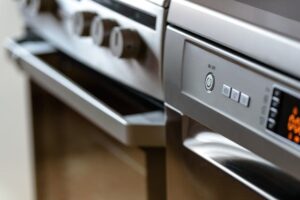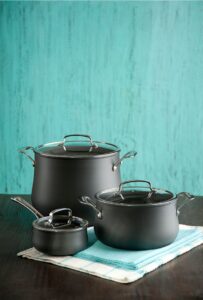Koshering utensils is a halachic process aimed at purifying utensils that have absorbed absorbed a non-kosher food/Chametz or transferring them from one use to another (such as from dairy to meat). The guide will detail the various koshering methods according to the types of utensils and their use.
Fundamental Principles for koshering
The Basic Halachic Principle
“As it is absorbed, so it is expelled” – the method of koshering should match the method of use of the tool:
– A tool that was used over an open flame – needs to be heated until white-hot.
– A utensil that has been used with boiling liquids – needs to be kashered.
– A utensil that has been used with boiling liquids – needs to be kashered.
– A tool that was used for cold food – needs to be washed and rinsed.
Prerequisites for Koshering
1. Thorough cleaning of the tool
2. Waiting 24 hours since last use
3. Rust and stain removal
4. Ensure that the vessel is intact without cracks
Main Koshering Methods
”Libun Chamur” – until white-hot.
When do we use it?
– Skewers
– Grilling nets
– Baking pans that are used without liquids
How does it work?
1. Heating the vessel until sparks are emitted from it
2. Heat until the crust burns on the other side.
3. It is important to ensure even heating of the entire vessel.
Important notes:
– This is the strongest Koshering method.
– It must be ensured that the tool can withstand high heat.
– Not suitable for coated cookware
”Libun Kal” – easier form of heating
When do we use it?
– Baking pans used with liquids
– Utensils that absorbed non-kosher food/Chametz at a lower heat.
How is it done?
1. Heating the vessel until the paper touching the other side turns brown
2. Heating to a temperature of approximately 300-400 degrees
3. Keeping the heat for a few minutes
Kashering in hot water
When do we use it?
– Cooking pots
– Spoons and ladles
– Utensils that are mostly used for sauce
How do you perform?
1. Boiling water in a large container
2. Placing the utensils in boiling water
3. Taking out the dishes and rinsing them with cold water
4. It must be ensured that the water is boiling all the time.
Important notes: –
The vessel must be completely immersed in water.
– It is important to ensure the water is bubbling.
– Do not put too many dishes in at once.
Irui ”Kli Rishon” – pouring hot water
– Tools used for infusion
– Kitchen utensils that do not come into direct contact with fire
How does one kosher?
1. Boiling water in a kettle
2. Pouring over all parts of the vessel
3. Rinse with cold water
Tool Koshering – the different methods
Metal tools
– Pots: Koshering by dipping in hot water
– Pans: Usually light/heavy heating with fire
– Cutlery: Koshering by dipping in hot water
– Templates: light/heavy heating with fire (depending on use)
Glassware
According to the different customs:
– Sepharadim: washing and rinsing
– Ashkenazim: not allow to kosher it.
– Some Rabanim Say it can be koshered by dipping in hot water three times
Clay vessels
– They can’t be kashered
– In special cases, one should consult a rabbi.
– The status of porcelain utensils is subject to dispute among the authorities.
Plastic utensils
Dispute among the authorities:
– There are those who permit hag’alah.
– There are those who completely forbid it.
– There are divisions between types of plastic
– In fact: consulting with a rabbi
### Wooden utensils
– Kashering three times
– It is important to ensure that the wood is whole.
– Do not use cracked utensils
Special Cases
Passover preparation
– There should be stricter measures.
– Extra care must be taken with cleanliness.
– There are different customs regarding glass utensils.
– It is advisable to consult a rabbi
Coated utensils
– Enamel coating: Dispute among authorities
– Teflon: problematic to kasher
– Ceramic coating: Depends on the type of coating
Plastic utensils
Dispute among the authorities:
– There are those who permit hag’alah.
– There are those who completely forbid it.
– There are divisions between types of plastic
– In fact: consulting with a rabbi
Wooden utensils
– Kashering three times
– It is important to ensure that the wood is whole.
– Do not use cracked utensils
Special Cases
Passover preparation
– There should be stricter measures.
– Extra care must be taken with cleanliness.
– There are different customs regarding glass utensils.
– It is advisable to consult a rabbi
Coated utensils
– Enamel coating: Dispute among authorities
– Teflon: problematic to kasher
– Ceramic coating: Depends on the type of coating
Practical Tips
Preparation for koshering
1. Thorough cleaning of the dishes
2. Removal of stickers and adhesive residues
3. Treatment for rust if present
4. Tool integrity check
During the koshering
1. Use of appropriate tools
2. Adherence to the correct temperat
3. Monitoring training times
4. Rinse with cold wat
Summary
Koshering utensils is a complex process that requires knowledge and precision. It is important to know the type of utensiles and how it is used in order to choose the appropriate koshering method. In case of doubt, it is always advisable to consult a qualified rabbi.
Additional Recommendations
– Keeping an organized list of the tools that have been certified
– Preparing suitable equipment in advance
– Planning appropriate time for koshering
– Conducting the koshering in a safe and ventilated environment
Nachman Harris. Kosher Expert.
Available for any of your questions






